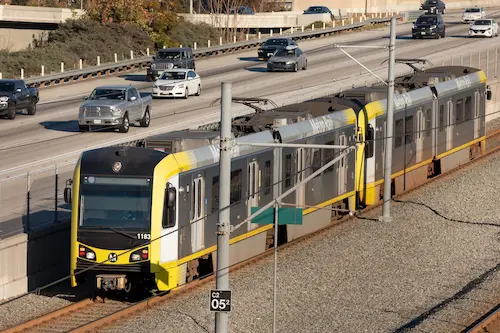Sustainable Metro Projects: Balancing Growth and Environmental Impact

We recognize the critical role sustainable metro projects play in urban infrastructure development. As cities expand, the need for efficient, eco-friendly transportation solutions becomes increasingly paramount.
Metro systems offer a viable answer, combining the necessity for growth with the urgency of mitigating environmental impact.
1. Understanding the Growth Imperative
Urban areas are the epicenters of economic activity, innovation, and cultural exchange. However, they also face significant challenges, including traffic congestion, air pollution, and limited space. Metro projects are crucial in addressing these issues.
Metro systems help reduce the reliance on personal vehicles by providing a reliable and efficient mode of transportation, thereby decreasing traffic congestion and lowering emissions.
We are committed to developing metro systems that cater to the growing demands of urban populations and align with sustainable development goals.
2. Environmental Impact Considerations
While metro projects offer numerous benefits, they also pose environmental challenges that must be addressed. The construction phase can have significant ecological impacts, including habitat disruption, noise pollution, and resource consumption. To mitigate these effects, Milidaro employs a range of strategies.
We prioritize using sustainable materials and construction practices, ensuring minimal disruption to the natural environment.
Additionally, our projects incorporate advanced noise reduction technologies and efficient waste management systems to lessen the environmental footprint.
3. Energy Efficiency and Emissions Reduction
One of the critical advantages of metro systems is their potential for energy efficiency. By operating on electricity, metro trains produce significantly lower emissions than traditional diesel-powered buses and cars. We are dedicated to maximizing this advantage.
Our metro projects are designed with energy-efficient technologies, such as regenerative braking systems and energy-saving lighting.
These innovations reduce operational costs and contribute to a cleaner environment. Furthermore, we continuously explore renewable energy options, such as solar panels and wind turbines, to power our metro systems sustainably.
4. Sustainable Design and Construction Practices
Sustainable metro projects begin with thoughtful design and planning. We emphasize integrating green building principles from the outset. This includes selecting environmentally friendly materials, optimizing resource use, and incorporating green spaces into metro station designs.
Creating green roofs and walls enhances urban biodiversity and improves air quality. Our design philosophy also extends to promoting multimodal transportation, encouraging the use of bicycles and pedestrian pathways in conjunction with metro systems.
5. Community Engagement and Inclusivity
Sustainable metro projects are not just about environmental impact; they must also address social and economic dimensions. We believe in the power of community engagement. By involving local communities in the planning and implementation phases, we ensure that metro projects meet the needs and expectations of the people they serve.
This participatory approach fosters a sense of ownership and responsibility, encouraging communities to support and sustain the projects in the long run. Moreover, we strive to make our metro systems inclusive, providing accessible transportation options for all individuals, including those with disabilities.
6. Technological Innovations
Innovation is at the heart of sustainable metro projects. Milidaro invests in cutting-edge technologies to enhance the efficiency and sustainability of our metro systems. From advanced signaling and communication systems to automated train operations, we leverage technology to improve safety, reliability, and performance.
Our commitment to innovation extends to exploring new materials and construction techniques that reduce environmental impact and improve durability.
7. Long-term Vision and Adaptability
Sustainable metro projects require a long-term vision. We understand urban growth and environmental conditions are dynamic and interconnected. Our metro systems are designed to be adaptable and capable of evolving with changing needs and technologies.
This forward-thinking approach ensures that our projects remain relevant and effective in the face of future challenges. By prioritizing sustainability, we contribute to the resilience and sustainability of urban environments, paving the way for a greener, more prosperous future.
8. Collaboration and Partnerships
Achieving sustainability in metro projects is a collective effort. We collaborate with various stakeholders, including government agencies, environmental organizations, and local communities.
These partnerships are essential for aligning our projects with broader sustainability goals and ensuring that we address the diverse needs of all stakeholders. By working together, we can overcome challenges and create metro systems that are not only efficient and reliable but also environmentally responsible.
9. Economic Benefits
Sustainable metro projects also bring significant economic benefits. They create jobs, stimulate local economies, and enhance property values. By reducing traffic congestion and improving air quality, metro systems contribute to healthier, more livable cities.
We are proud to foster economic growth while prioritizing environmental sustainability. Our projects demonstrate that balancing development with environmental impact is possible, providing a model for other cities to follow.
We, our commitment to sustainable metro projects reflects our dedication to creating a better future. By balancing growth and environmental impact, we ensure that our metro systems catalyze positive change, driving progress while preserving the planet for future generations.
